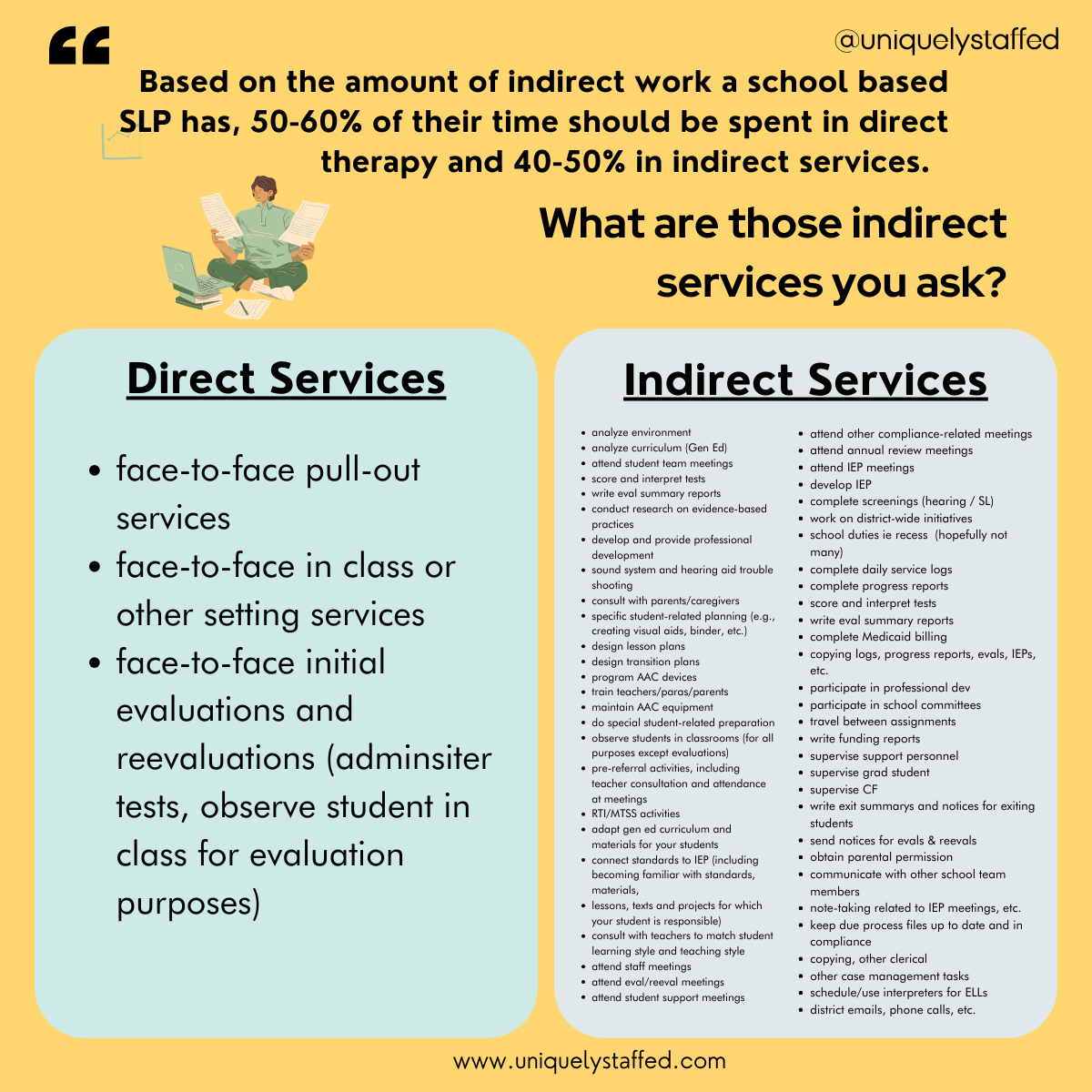Once Special Education Departments Understand This, They’ll Keep Their Therapists!
So, you have a great team of speech therapists, occupational therapists, special ed teachers, school psychologists and a physical therapist in your special ed department! Hurrah! What you want to do next is HOLD ON TO THEM!
And why is this so challenging in our current special ed environment? Why do we see such high turnover for some school districts, especially for speech therapists?
A huge factor is not calculating workload and indirect services. Working with students in counselling or therapy takes up a good portion of our day but by no means can it consume most of a therapist’s day. If it does, they’re headed for burnout central. Yes, a new graduate may be willing to take indirect work home with them, write IEPs while watching Netflix, and work through the weekends. But, after that initial new grad adrenaline has faded, therapists are less willing to burn the candle at both ends.
If you understand the indirect services model and all that therapists have to do not just to optimize their work but to stay in compliance, and keep the district in compliance, then it makes sense that depending on the specialization and paperwork expected, sped teachers, therapists and counsellors need time free from students for indirect services.
I created a visual for speech therapists that lists all of the indirect services. Districts can also go to ASHA to calculate a therapists workload. Some service delivery models require even more time for indirect services such as students who are AAC users or those on an assessment team.
Once you make certain that close to half of the day is allotted for indirect services and that caseloads reflect this, you’ll have a much happier staff who can then do things like
have more frequent parent communication which leads to smaller caseload sizes as carryover is happening
hold inservices for teachers. This reduces referrals and offers teachers support strategies to include in the general ed classroom
stay on top of IEP documents so the district stays compliant with timelines
In my next article, I’ll discuss how you can empower your employees and offer a delivery model that will keep parents happy and keep your therapists returning to your district.
In the meantime, here’s an SLPs to do list. We SLPs juggle many hats in the school and it’s no wonder we have the highest burnout rate in special ed. It’s only through manageable caseloads and admin support that we can make it in the schools and give our students the support they deserve!
